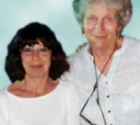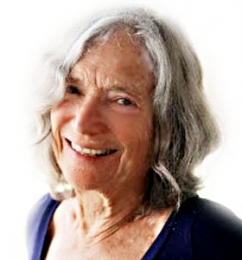-1366875263.jpg)
The tukul, initiated and built in 1994 by ESRA on Hatzrot Koach, was used as an arts and crafts center
“Israelis are moving to the country’s central region in such large numbers that experts predict 80% of Israel’s population will be living in the greater Tel Aviv area by 2025”, reported a recent article in TheMarker. The article went on to explain: “Such population shifts can greatly affect cities’ demographics. Cities such as Beit Shemesh, Rosh Ha’ayin, Jerusalem and Yavne, towns such as Mitzpeh Ramon, and many kibbutzim are among those that have undergone considerable change in recent years due to an influx of newcomers. One prime example is Kibbutz Hulda…”
Hulda awakened exciting memories for me, ESRA memories, of the mass of projects we created for Russian and Ethiopian immigrants in the 1990’s. The caravan site of Hulda, Hatzrot Hulda, in the Gezer region near Rehovot, is one such example.
The photo of Hulda in the said article looked like there was thatch in the background. It evoked the memory of a cover of our ESRAmagazine #76, April-May 1994, which featured a tukul, a traditional Ethiopian dwelling, which we built for the Ethiopian community on the caravan site of Hatzrot Koach, near Modiin. It was designed and built by a new immigrant from Ethiopia and used as an arts and crafts center for the Ethiopians living in caravans at the site. It was financed by The Sam Sebba Family Foundation.
.jpg)
That same year, 1994, we opened a learning center for the newly arrived Ethiopian children on Hulda, financed by the Clore Foundation. We taught the children Hebrew, Math, English and computer studies. This was the prototype of our learning centers, and in many we also gave the children a hot meal.
In our magazine #89, December 1996 - January 1997, Liora Blauer, the director of the center, wrote: “The August heat was terrible and there was no shade. We arranged two caravans for four classes. It was an impossible mission. The children threw stones, sand, anything they could find. There was no discipline or respect for others….The girl soldiers helping us left with tears in their eyes. We had no choice but to pay a local to guard and protect the classrooms. At first the children showed no enthusiasm to come to the Learning Center. We worked at drawing them together and the social relations amongst the children began to improve. Next we established wonderful relations and cooperation with some of the teachers and schools in Jerusalem where the Hulda children learnt in the mornings…This full cooperation contribution greatly to the children’s progress…Some teachers took little interest in the children…could not understand why the parents did not sign the report cards…and had no idea of the conditions in which the caravan children lived.
“Through work in the Center we became aware of the problems of violence in the family through the children’s drawings, the dreams they recounted, the games they played in the classrooms…I tried to see to it that our teachers had a teacher’s certificate and experience in special education…For some time now we have been working without a guard as the children have acquired working habits and have respect and appreciation for what we are going.
“A change for the better occurred when the computers from ESRA arrived. The children loved working with them and some were extremely capable with the computer…The more children leave the caravan site, more of those remaining come to the Learning Center…The parents and instructors on the site do their utmost to help the children progress. Two ESRA members, Phyllis Collins and Tzippi Sher, volunteer weekly and teach English in small groups. They have formed excellent relations with their young Ethiopian students which has led to success in the study of English.”
The caravan sites of Hulda and Koach were just two of the 21 after school learning centers we created, financed and ran with professional teachers during the years 1992-2001, at the cost of 3 million dollars. Some 5,360 children, most of them immigrants from Ethiopia and Russia, despite the difficulties described above, were enriched and empowered by ESRA to be able to cope within their schools but even more significantly, to move forward successfully in their new home, Israel.
The caravan sites and the tukul were long past dismantled, but ESRA’s efforts and investment in their young inhabitants, and belief in them, were part of our contribution to Israel and its immigrants.
.jpg)
A picture from the London Jewish Chronicle showing the arts and crafts center opening
 ESRAmagazine Photo Contest: terms and conditions
ESRAmagazine Photo Contest: terms and conditions Advertisers List
Advertisers List-1366906022.jpg) Mayor at tree planting
Mayor at tree planting Students say thank-you
Students say thank-you Praise for ESRAmagazine
Praise for ESRAmagazine In Stages . . . How we Bring you the Pages
In Stages . . . How we Bring you the Pages Merle Guttmann
Merle Guttmann